Off-Road Recovery: Winch Double Line Pull
Doc Rader 05.19.22
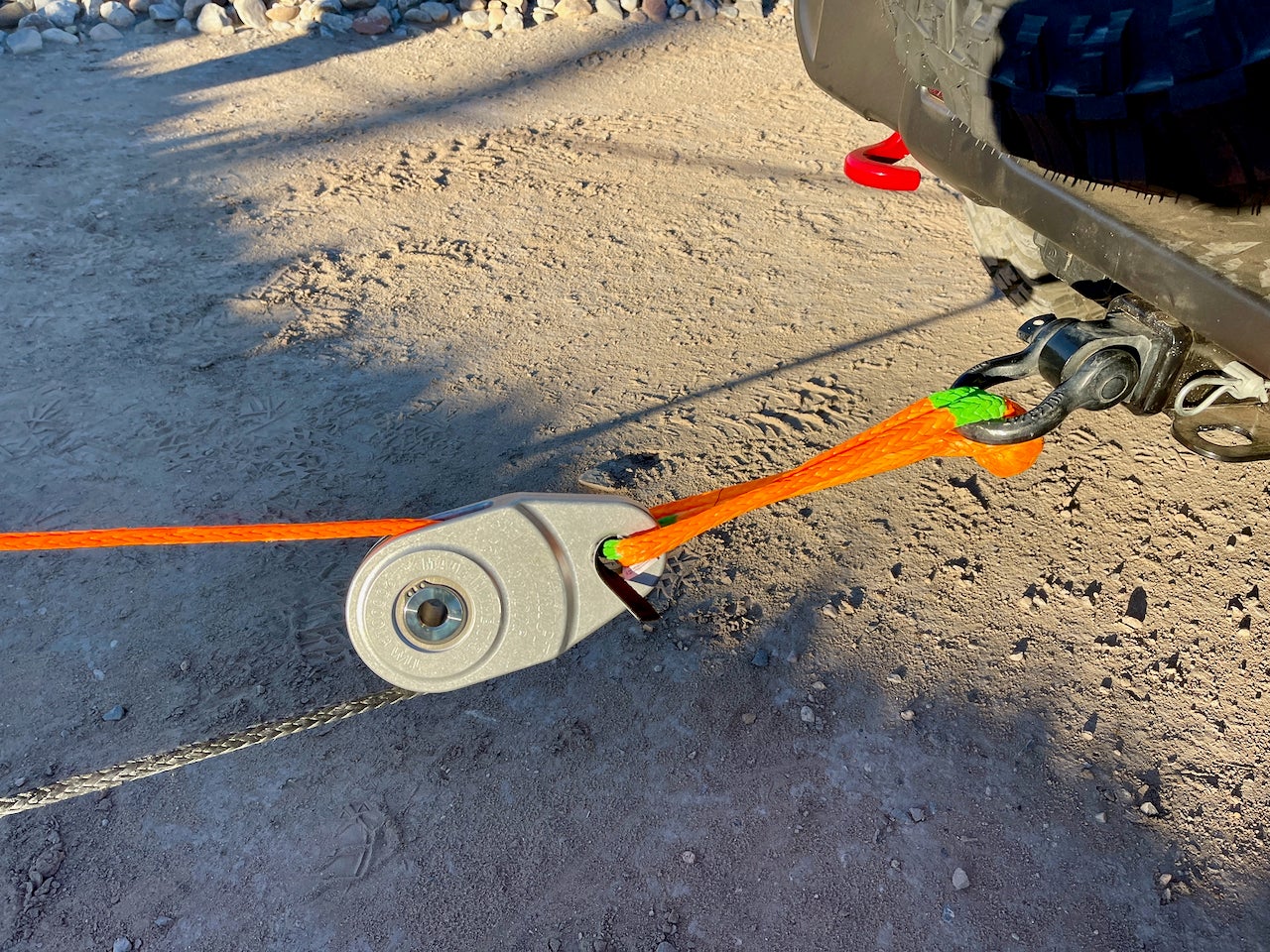
I recall an earlier time in my life. I had a brand new Jeep Cherokee (XJ, not that current abomination) that I had sunk a lot of blood, sweat, tears, and money into. I didn’t know crap about recovery, and information on the internet was lacking compared to current times. Recovery was basically hooking a chain to the stuck vehicle and hoping you didn’t break something on either rig. A “double line pull” wasn’t even part of the vocabulary.
It was also the first time I was able to afford a winch (and winch bumper). I barely knew what to buy, let alone how to use the thing. So I just bought the biggest thing I could afford at the time, a Warn winch rated for “12,000 pounds”. It had like a thousand pounds of steel cable winch line and just looked awesome. And the main thing I used it for was pulling stumps.
I only did a few recoveries with that winch, and I had no idea what I was doing. All my training was basically learned in the field and with people that had no real idea how to use it either. I can remember one time when we just connected my hook (at least it had a gate) over the front recovery hook on a bogged vehicle. Thankfully no one got hurt.
Back in the “Olden” Days
Safety was putting your hoods up, wearing leather gloves, and making sure everyone was out of the “cone of death.” Oh, and draping a ratty towel over the middle of the steel cable.
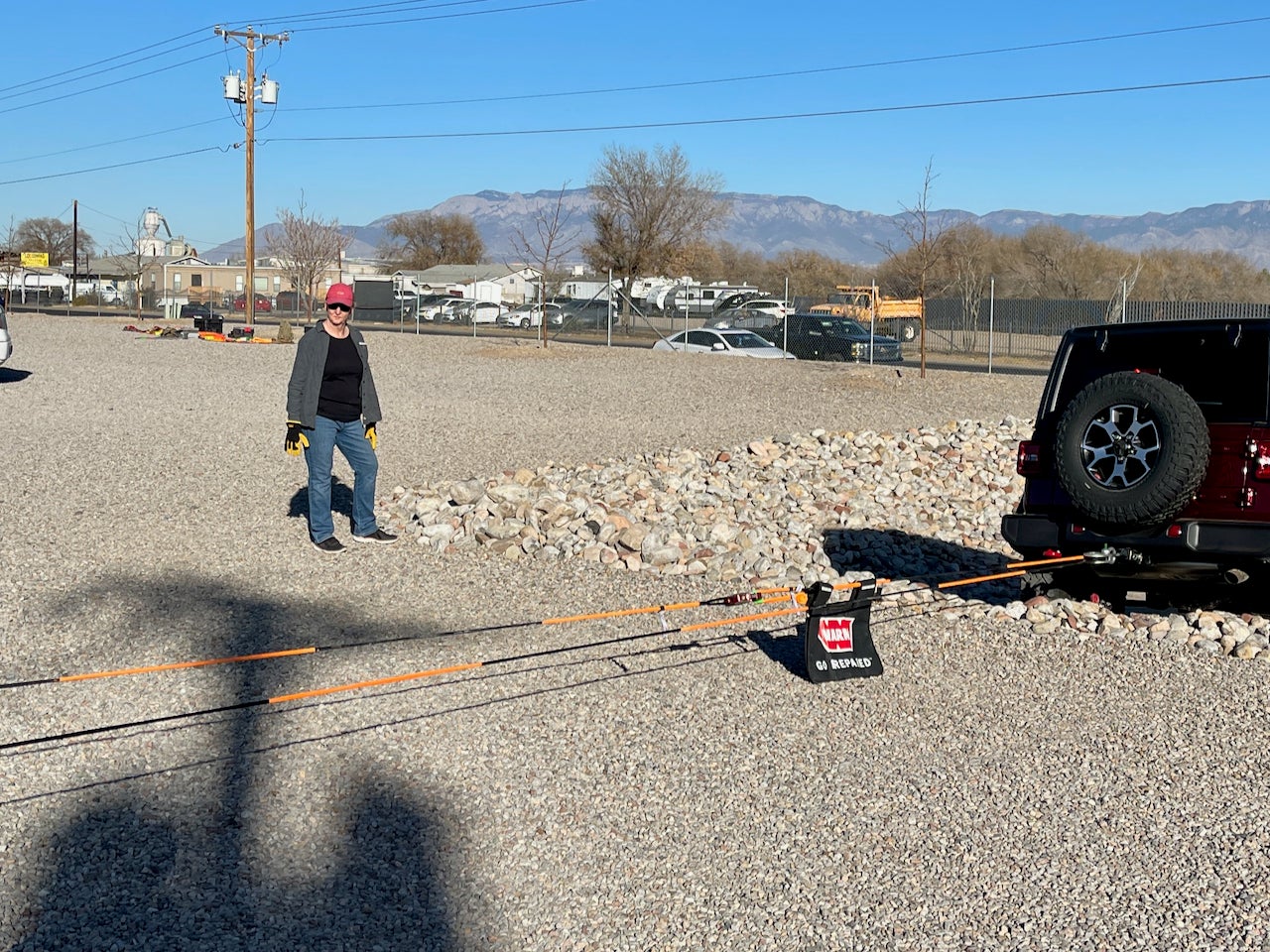
It turns out there is actual technique for safely using a winch. Fortunately, I have since hooked up with people that are not dumbasses old school when it comes to such things. I’ve received significant training and continue to learn. That said, I still have been on recoveries with people whose knowledge was similar to mine in the old days.
I’m skipping a lot of rigging basics in this article that will be forthcoming in a future post. This is merely trying to convince you that adding in a pulley block (that is appropriately rated for the weights you are moving) will allow you way more options for recovering a vehicle.
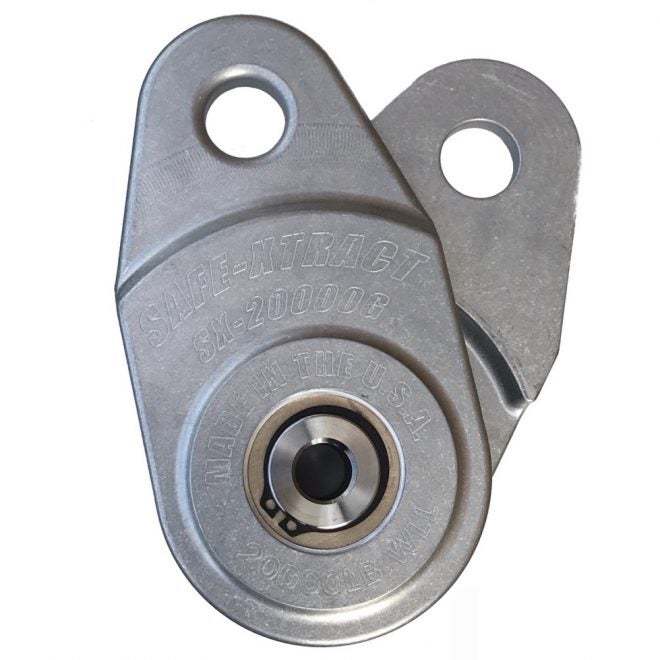
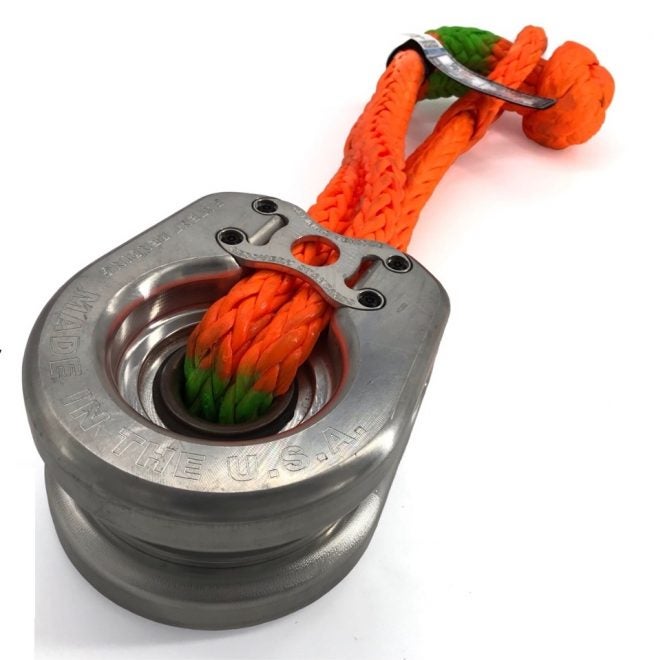
What is a Double Line Pull?
It is a way to increase the efficiency of the winch (effectively increasing the pulling power). It translates to more pulling power and can assist with recovering a bogged vehicle that is more stuck than would be safely possible with a single line pull.
A double line pull can be done to recover yourself, or another vehicle. In fact, it is a very simple setup. Basically, you run the winch line out from the winch and back to the winching vehicle through a pulley block. The pulley needs to be attached to either an anchor (if you are pulling yourself out), or to the stuck vehicle (if you are assisting another vehicle).

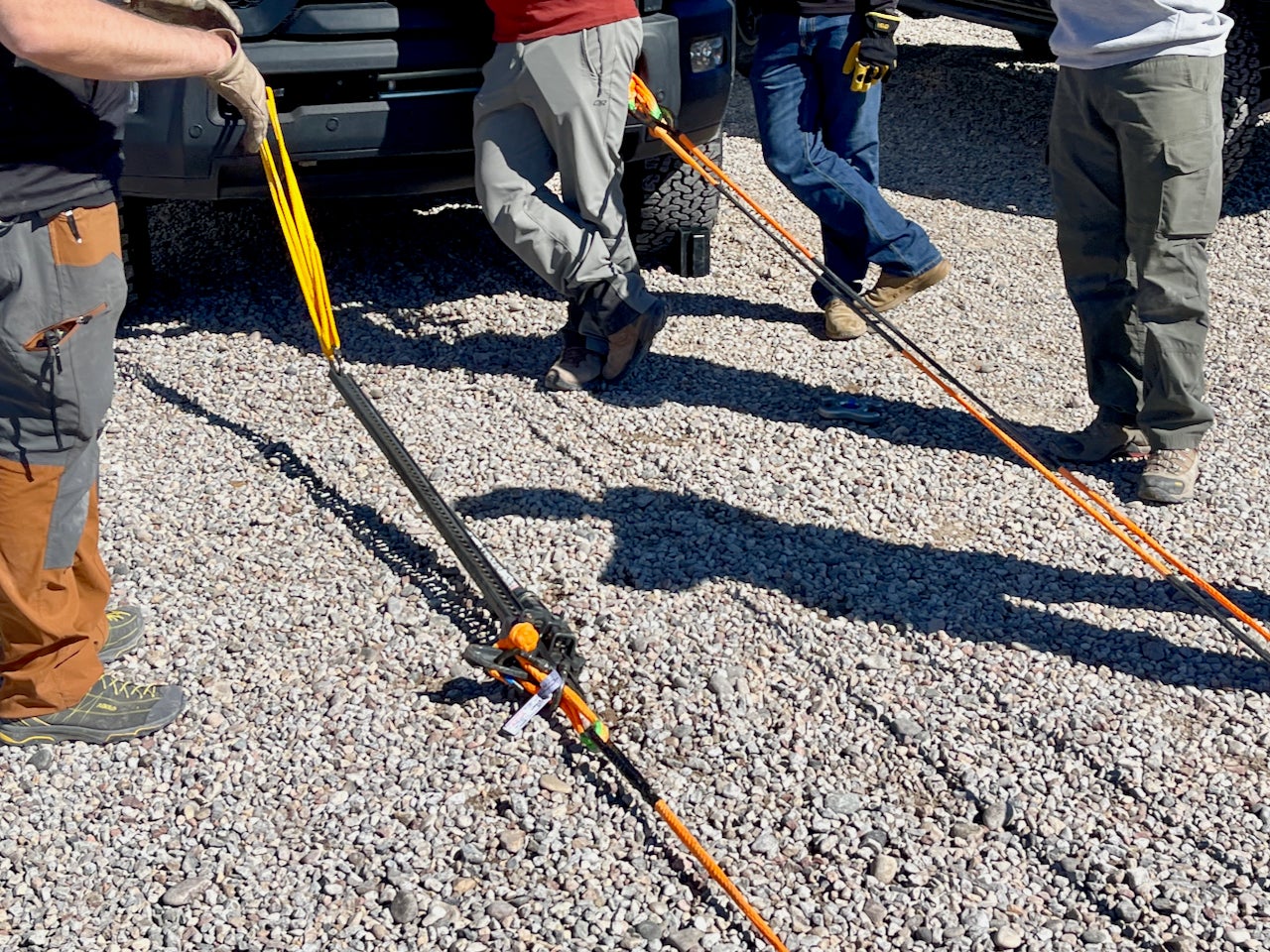
Mechanical Advantage: Increasing Pulling Power
Rated winch power is kind of a tricky thing. You only technically get the max capable force when you are at “one wrapped layer” on your winch drum. Each successive wrap layer decreases the overall force that the winch can pull. It is also important to realize that recreational recovery equipment is held to less stringent standards than industrial counterparts. Winch ratings might not be as exact as you would assume and ascertainment of how that rating was achieved might not be disclosed.
That said, we can still squeeze out a ton of performance from a winch if we understand the principles of mechanical advantage. If we can add in a pulley block, we can increase our mechanical advantage to 2:1, 3:1, or higher (you are only limited by the amount of gear you have). Using pulleys will mitigate variances in weight ratings and will help increase the efficiency of the winch.
In the following recovery we needed to use two double line pulls from two separate vehicles because the Unimog is exceptionally heavy and was stuck in deep mud.

It’s Not Free
Everything has a cost, and the downside to using a pulley block is that you also proportionally reduce the speed of line pull. Adding in one pulley will double the efficiency of that winch allowing you to pull nearly double the weight, but it will pull that weight about half as fast. Somewhere there is a formula that will help you calculate it exactly, though practically it does not matter.
Double Line Pull versus Single Line Pull
When might you need a double line? It depends on what we call a “stuck assessment.” Basically, you need to look at all of the factors that have caused the vehicle to become mired. What material is it stuck in? Sand? Mud? Are all wheels operable? Is it down a steep grade? How heavy is the bogged vehicle? How far away is the vehicle from the winch (remember that we get max pull when we only have one layer wrapped on the drum)?
The above are a few questions we need to ask. We also need to know the rating of our winch.
Single Line
Let’s say the vehicle is a Toyota Tacoma and has a weight of 5,275 pounds and is just stuck in soft sand (and for some dumb reason we don’t have traction boards and cannot air down the tires — both things we should try before resorting to a winch if possible). Let’s say the rescue vehicle weighs 7,800 pounds and has a winch rated to 9,500 pounds. This is a simple pull and we can do this from any distance from the assisting vehicle with a single line. We have plenty of pulling capacity.
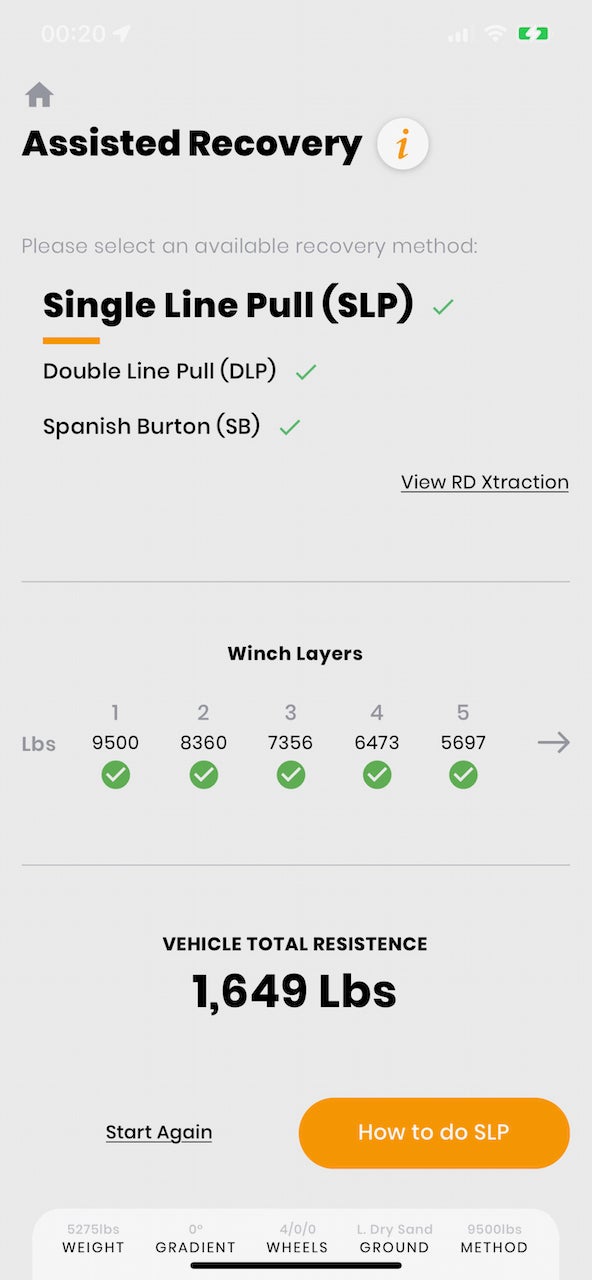
Double Line
Now let’s say we have a Sprinter van that weighs in at 9,425. It is stuck in deep mud and is at a 10-degree grade from the assisting vehicle. This exceeds the safety parameters when doing a single line pull (I might be able to get away with it at max distance from my winch or by shortening my line). But why should I run to the edge? With a couple of additional pieces of gear (pulley and shackle), I can do a double-line pull and return to a safe algorithm. I should also anchor my assisting vehicle to make sure it doesn’t lose purchase while pulling if there is a weight disparity.
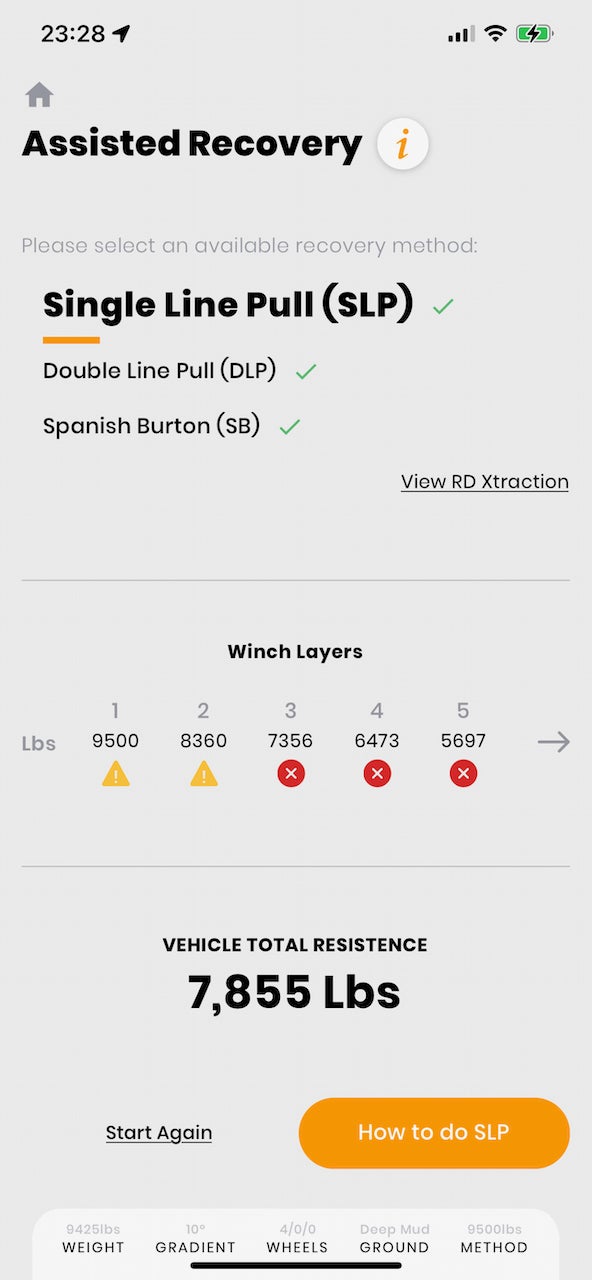
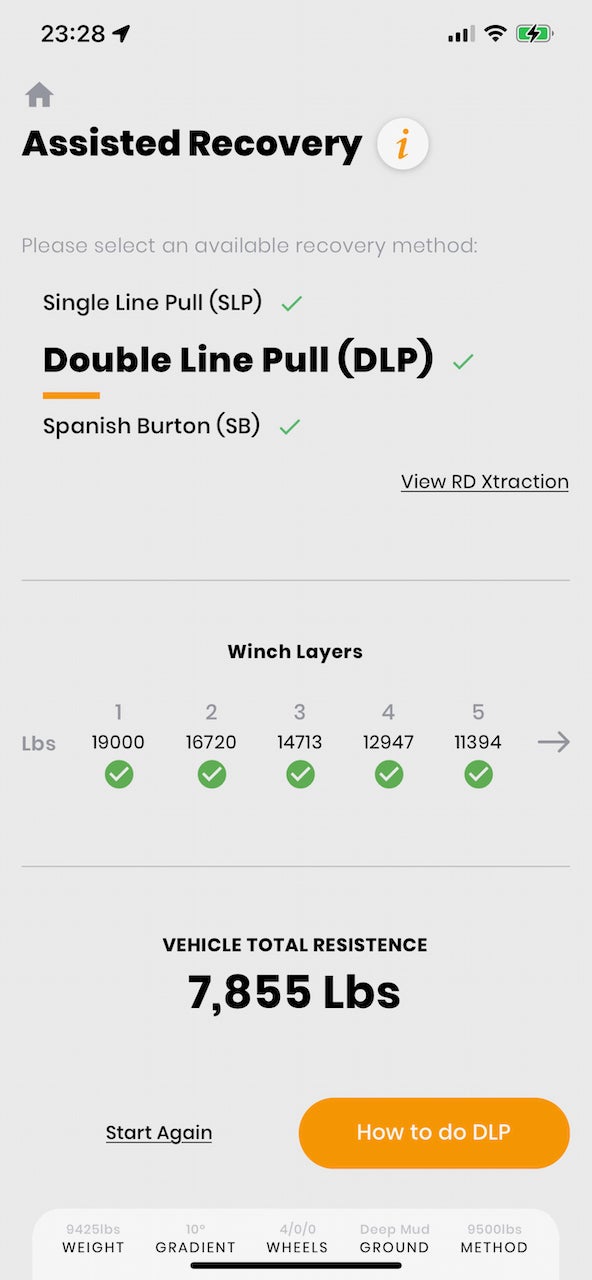
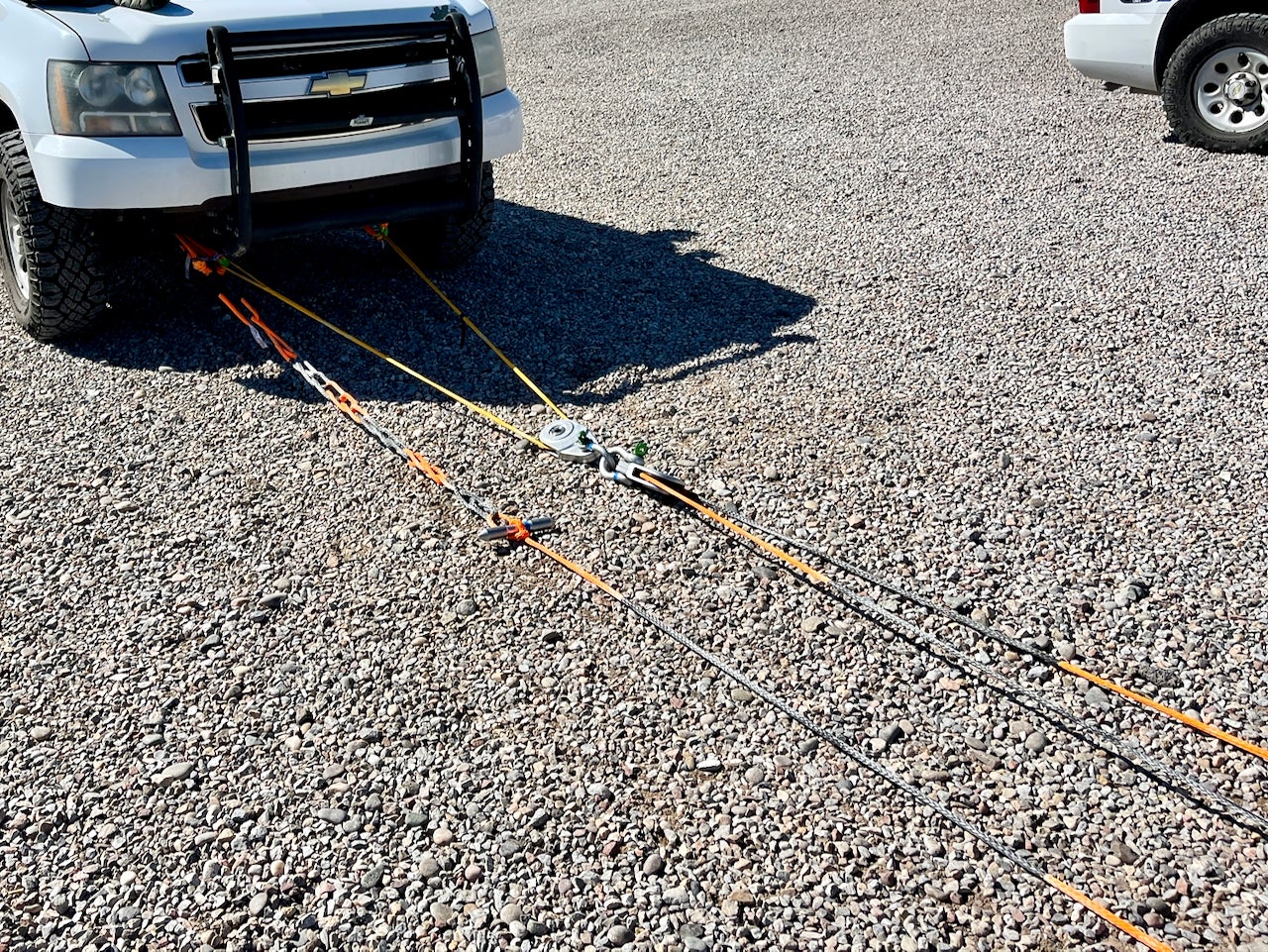
What’s in Your Recovery Kit?
Gear adds up and quality gear costs money, and you should make sure you are buying gear that is rated for what you need it to do. If you have invested money in a winch, you should also carry enough equipment to set up a double line pull. It’s just a pulley (or snatch block) and a couple more shackles.
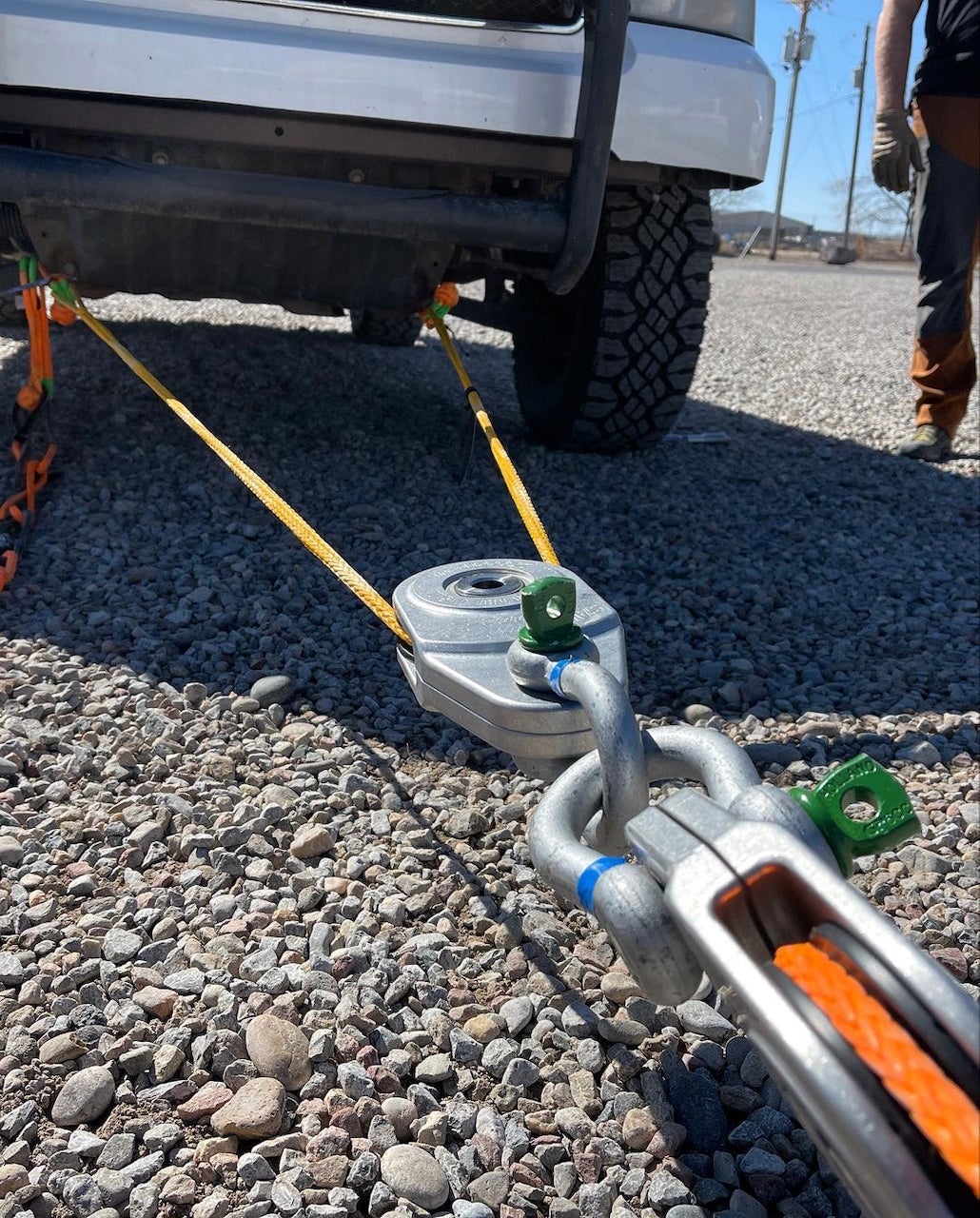
Being able to double your pulling power will come in more handy than you think and it really increases your options. In a future article, we will talk about a way to rig a 4:1 mechanical advantage with only two pulley blocks.
Feel free to share any shameful or successful recoveries you have been on in the comments.
Off-Road and Overlanding is sponsored by
To subscribe, visit: https://subscribe.onxmaps.com/offroad/purchase/membership

